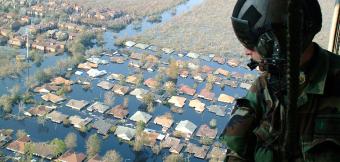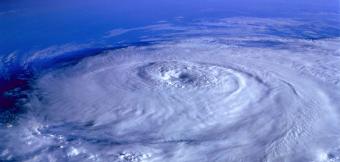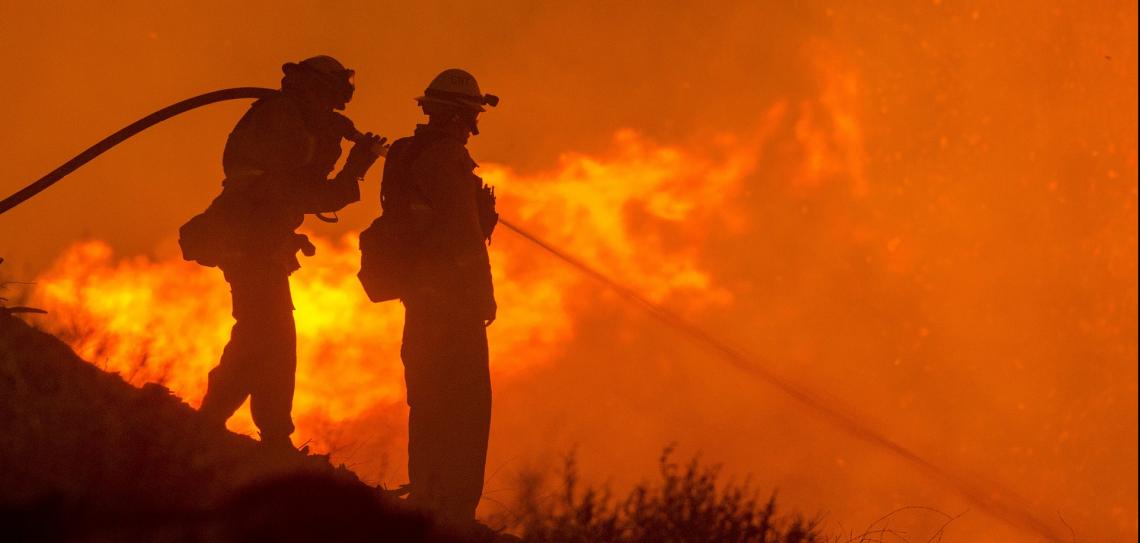
Design for wildfires
Hotter, drier summers and stronger winds mean more intense wildfires, more often. Action is needed to reduce risk to property, self, habitat and wildlife. Areas that were not previously considered at risk will become fire-prone, but housing and habitat security is possible through careful design.
There are three key things you can do: assess your threat level, redesign your home, modify the landscape to resist or redirect wildfire, and design a staged emergency fire plan. Everyone can take positive steps to protect against wildfire.
Threat Assessment
Start with a thorough assessment of the risks you face. Expect fire seasons to become longer and more severe. Next, consider the local topography and climate - fires generally move uphill, and will pass quickly along canyons or drainage features. Sunny slopes will be drier and more likely to ignite. Winds, especially hot, dry winds, will push fire along, so map the local prevailing winds. Look at a satellite map to examine the density of vegetation and housing and how directly these lead to your property. Also, research the history of fire in your area through records and dendrochronology (tree rings will show ferocity and direction of fires).
Understanding these local features will help you assess the likely threat level and threat directions. This is explained in detail in Andrew Millison's online book Permaculture Design Tools for Climate Resilience.
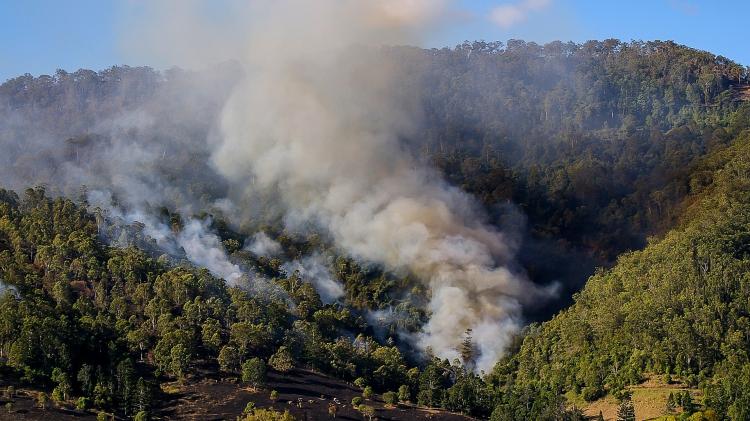
Design home and landscape to reduce fire risk
Adapted from Top Ten Ways to Protect Your Property From Wildfire, with additions by April from Permaculture Visions
Most importantly, homes need to be redesigned to withstand fire. If your home is not yet built, or is being rebuilt, you can get expert advice on how to build better to withstand fires. The Australian Bushfire Building Council https://www.bbca.org.au/ offers free advice to local homeowners needing to rebuild.
Fire breaks
Fire breaks are features that will not carry fire along the landscape. Examples include roads, irrigated gardens, open fields, lawns, areas under gravel or concrete, ponds, wetlands and fire resistant trees. Consider the wildfire threat direction/s and if any firebreaks already exist; if not, how can you create them? Firebreaks alone are not sufficient during firestorms when the threats are from flying embers and intense radiation; radiation and ember blocks are required.
Water storage
Wetter areas are less likely to burn than dry ones, so irrigation will improve fire resistance. Install water storage vessels that can gravity feed to vulnerable structures and slopes and invest in tank systems. They need to be designed to be full in the dry season. These can be made from recycled IBC vessels surrounded with metal sheeting, or on roofs to release when fires approach. Install sprinkler systems to the roof (these can be made with garden hoses and sprinklers). A timer is useful to keep the hoses primed.
Assume that at the time of a fire, the mains power will fail and the water mains pressure will drop, so investing in a solar powered, battery backup will be helpful. This can be made out of a recycled car battery.
Defensible space around your home
Clear woody plants and lay gravel, brick, or concrete within two metres (six feet) of your home. Use deck boards with a high fire rating. Remove combustibles from against the house and under the deck. Within 10 metres (30 feet), remove shrubs under trees, prune branches that overhang your roof, thin trees, remove dead vegetation, mow grass and add irrigation.
Move trailers, wood stores, propane tanks and sheds out of this area. Undertake maintenance twice yearly; clear your roof, clear out gutters, check your defensible space and firebreaks. Enclose all gaps with flywire, especially under the deck and openings to roof cavities.
Fire proof building materials
Maintain 6”/ 15 cm ground-to-siding clearance and choose paint with low combustion risk. Use multi-pane, tempered glass windows and non-combustible fences and gates. The roof is the most vulnerable part of your home, so choose clay shingles, slates, or tiles. Roofing tiles can be ripped up by firestorms, whereas metal sheeting with non combustible insulation is more secure. A roof that is simple and angled at a moderate slope will encourage embers to fly over. Treat wooden roofs with fire retardant or cover with mesh or foil. Use metal mesh to cover vents, box-in open eaves.
Remove anything that might catch sparks and fit non-combustible gutters with gutter covers. To reflect radiant heat, add large defences of thermal mass around the house such as large rocks or cob structures. The cheapest defendable home is earth sheltered as it is fire-resistant and low energy as it can be designed as solar passive.
Neighbourhood design
Even the most well-prepared home is in jeopardy if neighbouring houses ignite. If you live in a densely populated area, your home is only as fire-proof as your neighbourhood’s weakest links. Fire breaks and water storage will need to be designed communally - so will evacuation plans. Find out what local programmes exist, and how you can get involved. Help out elderly or vulnerable neighbours with their fire proofing measures and evacuation plans. See Action 49: 'Campaign for community adaptation'.
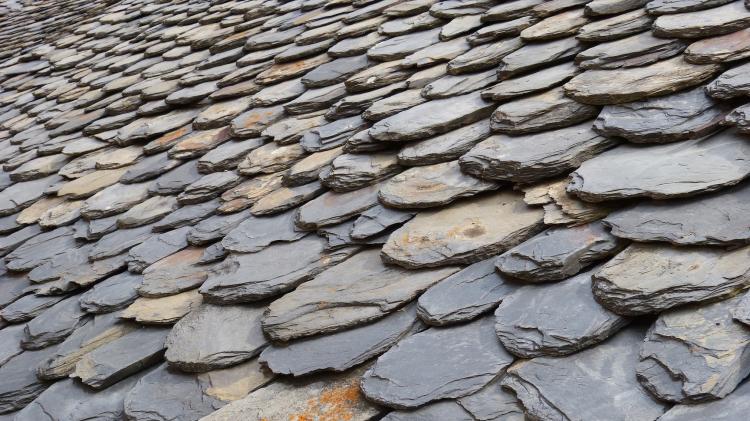
Design a survival plan
Advanced planning will better equip you to preserve your home and your life. Always plan to leave. Staying on your property during a fire will significantly increase its chance of surviving, but you need to balance this with personal safety. Unless you have a fire bunker that meets the standard and enough food for at least three days, do not stay.
Recent fires in Australia have exceeded all previous records. The threat is a combination of fire (embers and radiation in excess of 1200k), severe smoke, and noise. You need all expert safety equipment to survive a pyroculmulus fire storm and you may be stranded for days without water, power, roads or food. At a minimum, invest in a fire blanket, mask, metal water flask and battery powered or hand crank emergency radio (see also Action 34: 'Learn to survive an emergency'). Key elements of your plan should include:
House
Remove all combustibles from your yard. Close all windows, vents and doors to prevent a draft. Shut off natural gas, propane, or fuel oil. Fill any large vessels - pools, garbage cans, or tubs - with water to slow or discourage fire. If you have time, clear debris from the roof and gutters. Consider how you will use hoses or sprinklers.
Valuables
Be clear how all family members, including pets, fit into your evacuation plan. Gather your most important things in one small bag and put other items in a fireproof safe (but be aware that most safes have melted in recent fire storms). Back up computer files onto the cloud. Most people regret not having their favourite photos; most other possessions can be replaced. Most importantly, always put yourself and other people before objects or animals.
Keeping in touch
Have a battery operated local radio to track the progress of the fire and the evacuation status. Consult emergency government advice apps where available. Just because the fire has passed doesn't necessarily mean you are out of danger; stay alert for fire updates.
Evacuation
Know your evacuation route and prepare an evacuation checklist. Where possible, have a second route planned. Rehearse your evacuation. Have a stock of emergency supplies and a small radio on hand to take with you. Wear non flammable protective clothing and footwear. Charge up your mobile phone. If advised to evacuate, do so immediately. If you have pets, have their cages at the ready beside their housing. On days likely to have fire threats, keep them indoors so they can be evacuated. Keep spare pet food and medicines at hand.
Personal survival
If caught in a wildfire, don't run. Instead, look for a body of water to lie in. If there is no water nearby, find a depressed area with little vegetation, lie low to the ground, and cover your body with a woollen blanket, wet clothing or soil. Stay low and covered until the fire passes. Protect your lungs by breathing air closest to the ground, through a moist cloth, if possible.
Picture credits: 1) skeeze - pixabay.com 2) sandid - pixabay.com 3) makamuki0 - Pixabay
Assess your risks from wildfire then prepare for the worst
Take positive steps to protect against wildfire
Join your local community fire protection team, or create your own
Campaign for greater government awareness about wildfire risks


